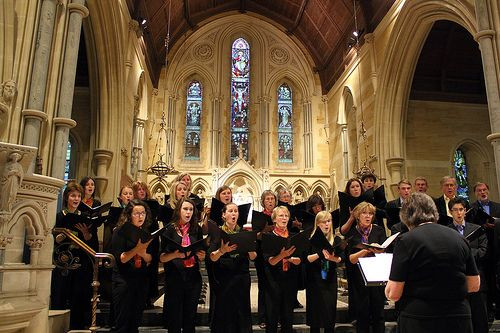Hearts In Tune: Singing Synchronizes The Heartbeats Of Choir Members [Video]

Choir harmonies do more than just synchronize vocal chords, as new research from Sweden demonstrates that singing unifies heartbeats.
"We already know that choral singing synchronises the singers' muscular movements and neural activities in large parts of the body," said lead author and neuroscienitst Dr. Björn Vickhoff of the Sahlgrenska Academy at the University of Gothenburg, Sweden. "Now we also know that this applies to the heart, to a large extent."
This phenomenon is due to the intimate relationship between the lungs and the heart. Physicians have known for over 150 years that how fast we breath can regulate the tempo of one's pulse. This study builds upon this knowledge to include the relaxing melodies and metered breathing practice of choral music.
Vickhoff and colleagues recruited 18-year-olds from a local high school and had them perform three types of choral exercises: monotone humming, singing a well-known Swedish hymn, and chanting a slow, peaceful mantra.
The researchers found that the heart rates of the 15 students-turned-subjects increased and decreased in unison. Music with the most defined structure — hymns — did the best job of linking up heartbeats.
According to the authors, this coalescence involves the lungs sending messages to the brain, which are then relayed to heart's pacemaker, and in both cases, the signals most likely travel via the vagal nerve.
"Singing regulates activity in the so-called vagus nerve which is involved in our emotional life and our communication with others and which, for example, affects our vocal timbre," explained Vickhoff. "Songs with long phrases achieve the same effect as breathing exercises in yoga. In other words, through song we can exercise a certain control over mental states,"
By unifying our mental states via song, the melodic harmonization of heart rate may allow humans to express collective willpower. Slow, calm singing in groups could also provide an easy method for lowering heart rates for those who have high blood pressure.
"One need only think of football stadiums, work songs, hymn singing at school, festival processions, religious choirs or military parades," concluded Vickhoff. "Research shows that synchronised rites contribute to group solidarity. We are now considering testing choral singing as a means of strengthening working relationships in schools."
Author Björn Vickhoff explains how singing puts hearts in sync.
Source: Vickhoff B, Helge Malmgren H, Åström R et al. Music structure determines heart rate variability of singers. Frontiers in Neuroscience. 2013.
Published by Medicaldaily.com



























